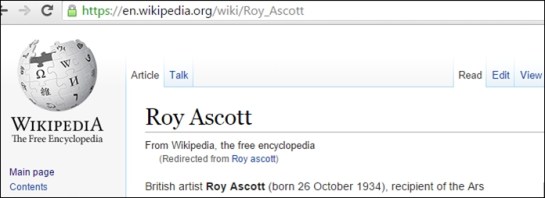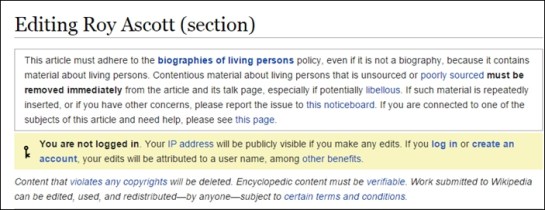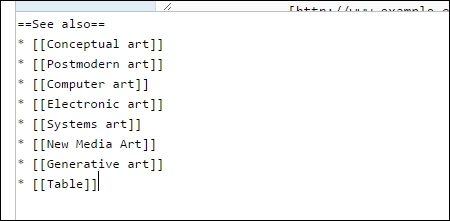“Disclosure and analysis require human transaction, the transfer of feelings, thoughts, and information from one to another. Reciprocity generates trust and sympathy. This is particularly appropriate when we are concerned with disclosure of the inner self, as in art. The table-top enables us to float out our intangible dreams and intimations on a secure and substantial surface.” – p 172, “Table”, Roy Ascott, 1975.
1) https://en.wikipedia.org/wiki/Roy_Ascott
3) Signed up under username ‘Roytable’:
4) At 4:45 AEST 11/05/15, added ‘Table’ link to Roy Ascott Wikipedia page, under ‘See Also.’
Link goes to disambiguation page entitled ‘Table’:
5) At 4:50 AEST 11/05/15, added to the ‘Table’ disambiguation page:
“Roy Ascott’s text ‘Table,’ concerning a dream of communal discourse”
6) Link leads to Wikipedia article, ‘Dream’:
7) Revision histories:
https://en.wikipedia.org/w/index.php?title=Roy_Ascott&action=history
https://en.wikipedia.org/w/index.php?title=Table&action=history
8) After 57 minutes, the changes were undone and the pages restored to their previous state:
Is love in the Telematic Embrace only transient?
Do today’s platforms of distributed authorship truly permit a chance to dream?
– Jess Williams







Personally yes. Your idea is born, so you already get the chance to dream….while on a public platform, maybe you need extra response, but it doesn’t matter. I believe you can find other fantastic ways to do so…
LikeLike